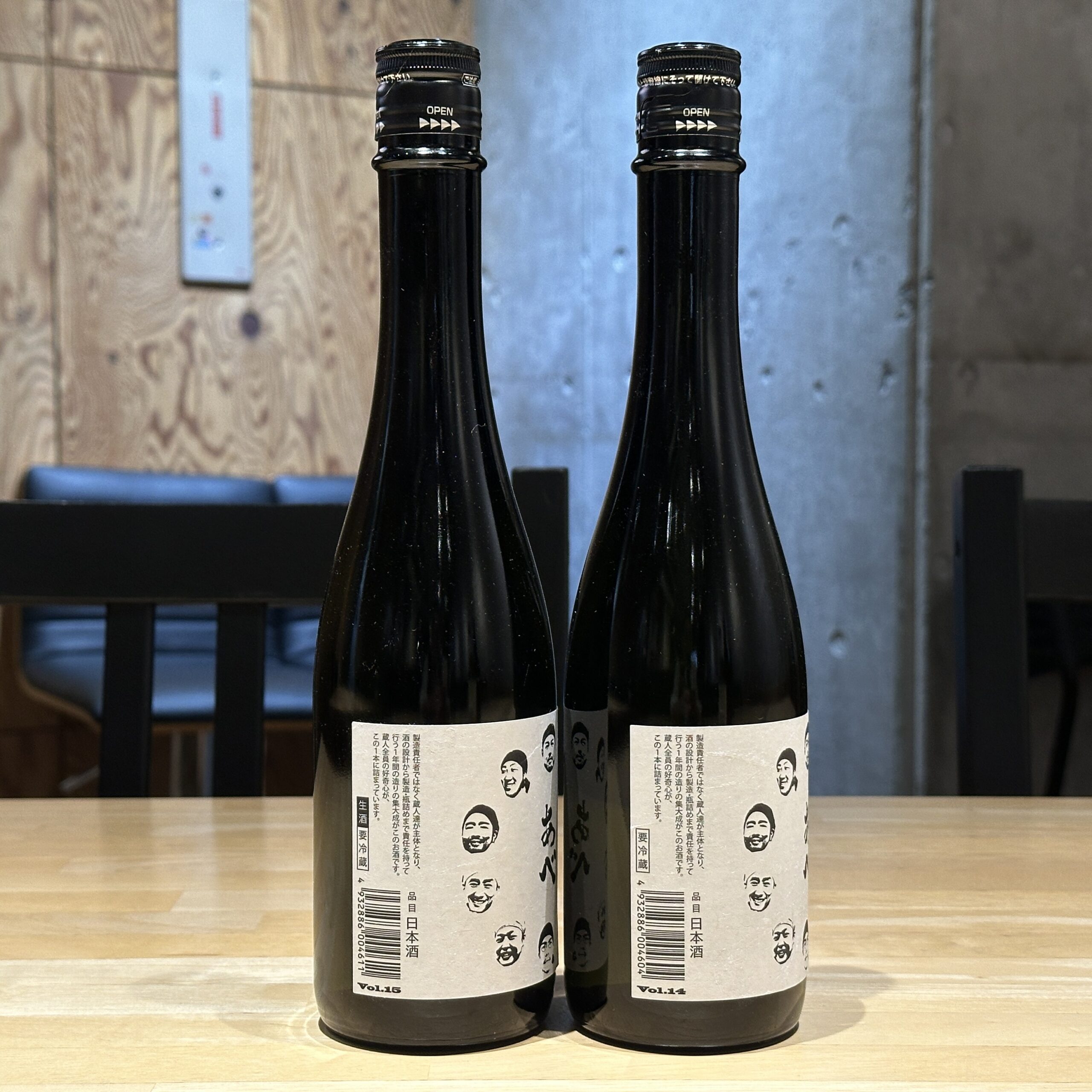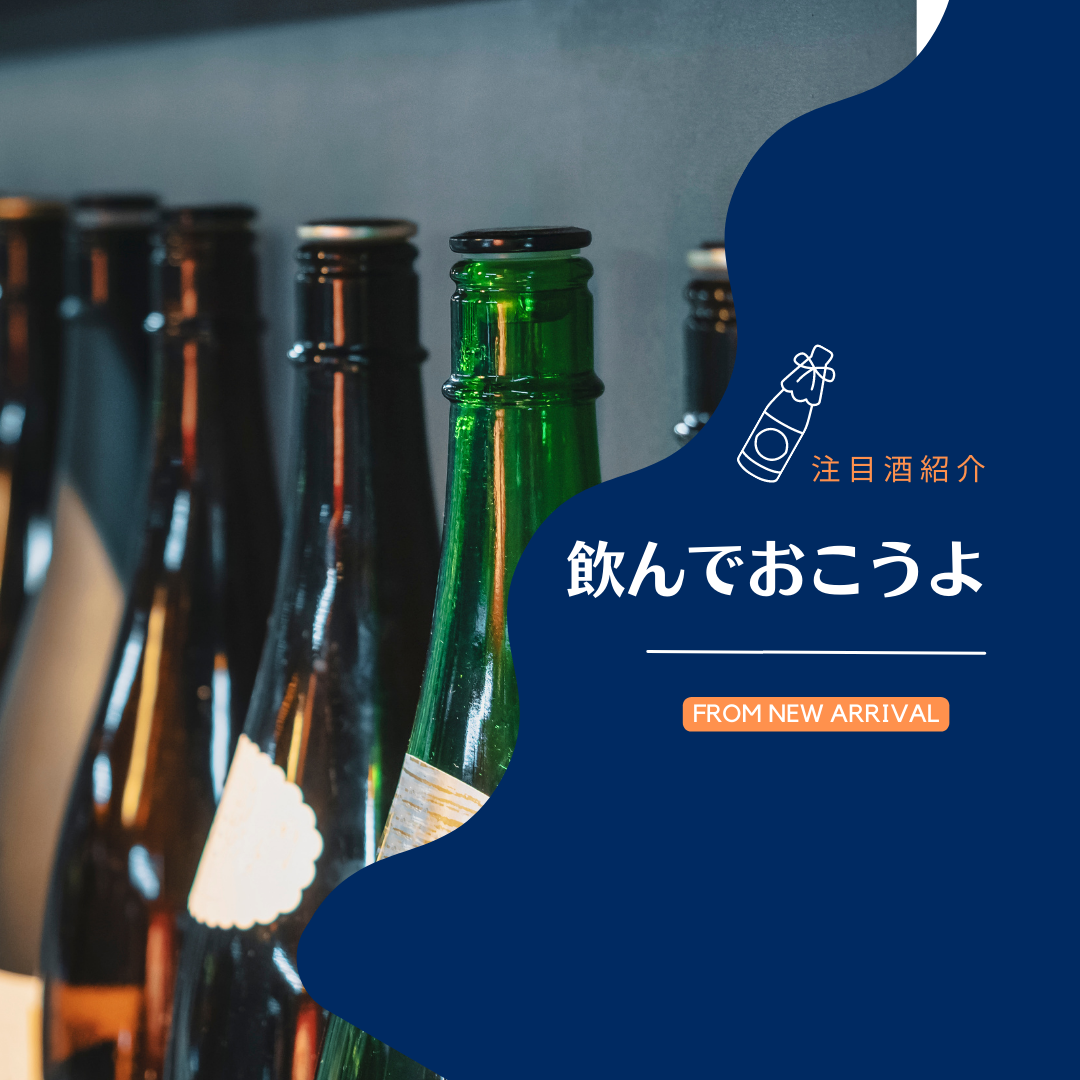
日本酒は一期一会です。季節に合わせてさまざまな日本酒が入荷して、飲まれて、消えて行きます。飲む機会をなくしたとき、来年まで待っていただくことになります。ここでは店主が召し上がっていただきたいと思う日本酒をご紹介しています。
Sake is a once-in-a-lifetime opportunity. Various kinds of sake arrive according to the season, are drunk, and disappear. When you lose the chance to drink, you will have to wait until next year. Here, we introduce sake that the owner would like you to try.
あべ ぼくたちの酒 Vol.14 & Vol.15

日本酒は食と合わせることが好きな、自称・飲み手代表の今井です。
・
新着酒の所でも紹介をしたのですが、あまりにも内容があるために、こちらもでもまた紹介させていただくことととしました。
・
まず、Vol.14ですが、第一の特徴は「柱焼酎仕込」という技法です。日本酒の伝統的な製法のひとつで、米焼酎や粕取り焼酎を日本酒の醪や上槽した日本酒に加える技法です。アルコール度数を高め、腐造防止や劣化防止を目的としています。江戸時代初期から行われており、安全醸造が確立する前、すなわち明治時代の中ごろまでは一般的に普及していました。現在は、焼酎に代わって醸造アルコールを添加する製法が主流となっています、とのこと by Google 生成AI
・
つまり、蒸留酒と醸造酒のコラボということで、その味わいは甘さと酸のハーモニーを楽しむということになり、即ち、食との合わせも楽しめるということになります。
・
また、Vol.15では、もっと興味深いことをやっています。
・
アルコール度数は13%、原材料は米(新潟県産)、米こうじ(新潟県産米)、単式蒸留焼酎(自社製造)で、酒粕を蒸留した自社製造の粕取焼酎にモロミを加えて造られています。柱焼酎仕込みと貴醸酒仕込みのダブル仕込みがされており、ソービニヨンブラン・リンゴの香りが特徴です、とのこと by Google 生成AI
・
言わば、足し算を掛け算にしてしまったという話。こんな魅力的な醸造方法があったということです。
・
いま、これらの日本酒を楽しむことができること、まさに幸せってものでしょう。
・
新着酒の所でも紹介をしたのですが、あまりにも内容があるために、こちらもでもまた紹介させていただくことととしました。
・
まず、Vol.14ですが、第一の特徴は「柱焼酎仕込」という技法です。日本酒の伝統的な製法のひとつで、米焼酎や粕取り焼酎を日本酒の醪や上槽した日本酒に加える技法です。アルコール度数を高め、腐造防止や劣化防止を目的としています。江戸時代初期から行われており、安全醸造が確立する前、すなわち明治時代の中ごろまでは一般的に普及していました。現在は、焼酎に代わって醸造アルコールを添加する製法が主流となっています、とのこと by Google 生成AI
・
つまり、蒸留酒と醸造酒のコラボということで、その味わいは甘さと酸のハーモニーを楽しむということになり、即ち、食との合わせも楽しめるということになります。
・
また、Vol.15では、もっと興味深いことをやっています。
・
アルコール度数は13%、原材料は米(新潟県産)、米こうじ(新潟県産米)、単式蒸留焼酎(自社製造)で、酒粕を蒸留した自社製造の粕取焼酎にモロミを加えて造られています。柱焼酎仕込みと貴醸酒仕込みのダブル仕込みがされており、ソービニヨンブラン・リンゴの香りが特徴です、とのこと by Google 生成AI
・
言わば、足し算を掛け算にしてしまったという話。こんな魅力的な醸造方法があったということです。
・
いま、これらの日本酒を楽しむことができること、まさに幸せってものでしょう。
阿部裕太のNote・柱焼酎仕込みの清酒製造
阿部酒造のWebsite
I’m Imai, a self-proclaimed drinker and lover of sake pairing with food.
・
I introduced it in the new sake section, but since there is so much content, I decided to introduce it here as well.
・
First of all, the first feature of Vol.14 is the technique called “Hashira Shochu Shikomi”. This is one of the traditional methods of manufacturing sake, and involves adding rice shochu or kasutori shochu to sake moromi or sake brewed in a tank. The purpose is to increase the alcohol content and prevent spoilage and deterioration. It has been practiced since the early Edo period, and was common until the middle of the Meiji period, before safe brewing was established. Currently, the mainstream method is to add brewed alcohol instead of shochu.By Google Generated AI
・
In other words, it is a collaboration between distilled alcohol and brewed alcohol, so you can enjoy the harmony of sweetness and acidity, which means you can also enjoy pairing it with food.
・
Also, in Vol.15, we are doing something more interesting.
・
The alcohol content is 13%, and the ingredients are rice (produced in Niigata Prefecture), rice koji (rice produced in Niigata Prefecture), pot-distilled shochu (produced in-house), and moromi is added to the kasutori shochu produced in-house by distilling sake lees. I am. It is double-brewed with Hashira shochu and Kijo sake, and is characterized by the scent of Sauvignon Blanc and apple.By Google Generated AI
・
In other words, addition has become multiplication. This means that there is such an attractive brewing method.
・
We are truly blessed to be able to enjoy these sakes now.
・
I introduced it in the new sake section, but since there is so much content, I decided to introduce it here as well.
・
First of all, the first feature of Vol.14 is the technique called “Hashira Shochu Shikomi”. This is one of the traditional methods of manufacturing sake, and involves adding rice shochu or kasutori shochu to sake moromi or sake brewed in a tank. The purpose is to increase the alcohol content and prevent spoilage and deterioration. It has been practiced since the early Edo period, and was common until the middle of the Meiji period, before safe brewing was established. Currently, the mainstream method is to add brewed alcohol instead of shochu.By Google Generated AI
・
In other words, it is a collaboration between distilled alcohol and brewed alcohol, so you can enjoy the harmony of sweetness and acidity, which means you can also enjoy pairing it with food.
・
Also, in Vol.15, we are doing something more interesting.
・
The alcohol content is 13%, and the ingredients are rice (produced in Niigata Prefecture), rice koji (rice produced in Niigata Prefecture), pot-distilled shochu (produced in-house), and moromi is added to the kasutori shochu produced in-house by distilling sake lees. I am. It is double-brewed with Hashira shochu and Kijo sake, and is characterized by the scent of Sauvignon Blanc and apple.By Google Generated AI
・
In other words, addition has become multiplication. This means that there is such an attractive brewing method.
・
We are truly blessed to be able to enjoy these sakes now.
#おいしい酒倶楽部 #阿部酒造 #新潟酒 #柱焼酎仕込 #ぼくたちの酒 #dericioussakeclub #abebrewery #hasirashouchushikomi #abe_bokutachinosake #niigatasake


